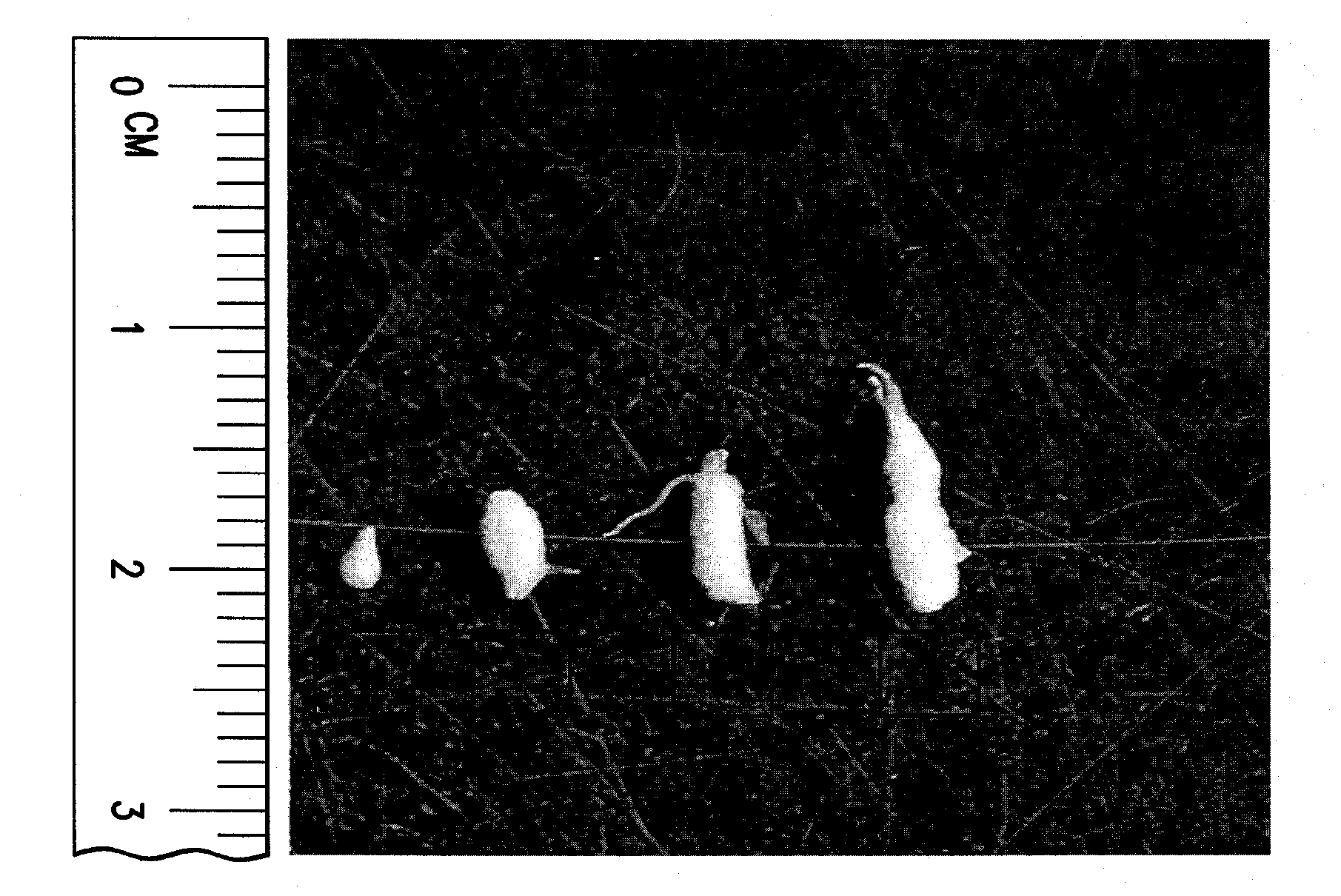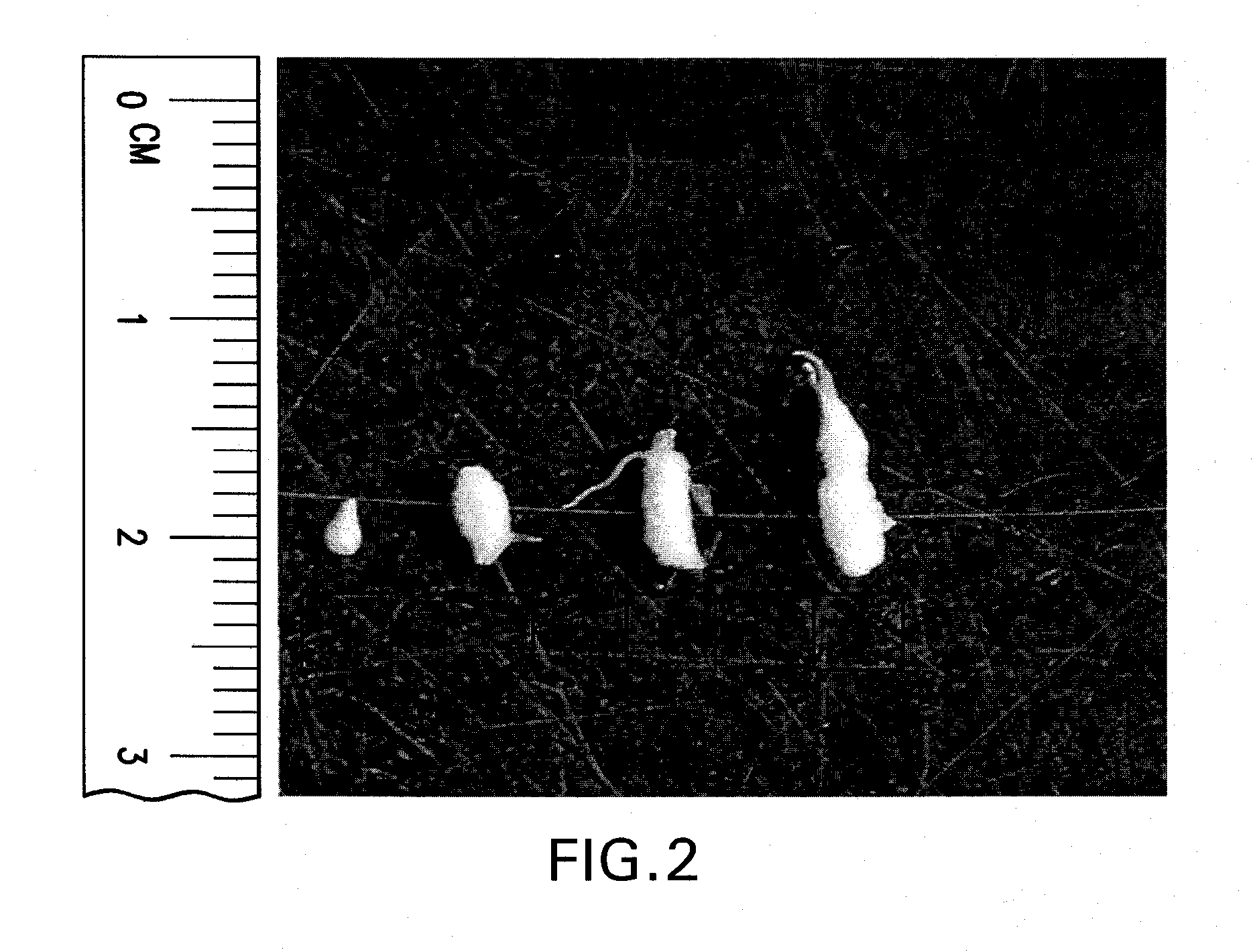Methods and compositions for root knot nematode control
- Summary
- Abstract
- Description
- Claims
- Application Information
AI Technical Summary
Benefits of technology
Problems solved by technology
Method used
Image
Examples
example 1
Hairy Root Generation Protocols
[0138]For soybean A3244 (susceptible) or P188788 (resistant) hairy roots, A. rhizogenes strain K599 (NCPPB 2659; NCPPB, Sand Hutton, York, UK) was grown and maintained on LB (Luria Bertani), or yeast extract and peptone (YEP) media. Yeast extract is the water-soluble portion of autolyzed yeast. The autolysis is carefully controlled to preserve naturally occurring B-complex vitamins. Yeast extract is typically prepared by growing baker's yeast, Saccharomyces spp., in a carbohydrate-rich plant medium. The yeast is harvested, washed, and resuspended in water, where it undergoes autolysis, i.e., self-digestion using the yeast's enzymes. Yeast extract is the total soluble portion of this autolytic action. The autolytic activity is stopped by a heating step. The resulting yeast extract is filtered clear and dried into a powder by spray drying. Methods for generation of transgenic tomato Mountain Spring (susceptible) or Fresh Mountain Plus (resistant) hairy r...
example 2
Nematode Bioassays on Hairy Root Material
[0139]Following hairy root line selection, roots for plant nematode bioassays were transferred to fresh plates containing Gamborg's B-5 medium and allowed to grow for approximately two weeks to provide sufficient tissue for nematode infection before inoculation with second-stage juveniles of root knot nematode (RKN). Individual hairy root tips were placed on infection plates. Typically, about 20 plates were used for pathogenicity testing of transformed roots for reaction to SCN or RKN. Each plate contained a transformed root from a separate integration. An additional 20 plates containing a transformed (empty vector) SCN-susceptible or RKN-susceptible control and an additional 20 plates containing a transformed SCN-resistant or RKN-resistant control were included in the tests. The protocol utilized was essentially that of Narayanan et al., 1999, with minor modifications. Plates were inoculated with approximately 450 sterile M. incognita J2s an...
example 3
Root Knot Nematode Target Genes Suitable for Broad Spectrum Control of Meloidogyne Species through RNA Interference
[0143]Table 1 describes essential nematode gene nucleotide sequences (predicted or encoded polypeptides are listed in Table 2) with high nucleotide conservation that facilitate RNAi-based broad spectrum control of Meloidogyne spp. These sequences nonetheless have sufficient nucleotide divergence from essential genes in non-target organisms such as humans, the host plant and beneficial insects to reduce the likelihood of toxicity to these other organisms if exposed to the nematode dsRNAs.
[0144]To identify M. incognita orthologs of characterized C. elegans genes, homology searches were performed using the BLAST suite of programs (Altschul et al., 1990). Using predicted protein sequences for C. elegans genes (Wormpep) TBLASTN was used to search both H. glycines clustered ESTs and other sequences available from Genbank as well as recently generated proprietary genome survey...
PUM
| Property | Measurement | Unit |
|---|---|---|
| Fraction | aaaaa | aaaaa |
| Fraction | aaaaa | aaaaa |
| Fraction | aaaaa | aaaaa |
Abstract
Description
Claims
Application Information
 Login to View More
Login to View More - R&D
- Intellectual Property
- Life Sciences
- Materials
- Tech Scout
- Unparalleled Data Quality
- Higher Quality Content
- 60% Fewer Hallucinations
Browse by: Latest US Patents, China's latest patents, Technical Efficacy Thesaurus, Application Domain, Technology Topic, Popular Technical Reports.
© 2025 PatSnap. All rights reserved.Legal|Privacy policy|Modern Slavery Act Transparency Statement|Sitemap|About US| Contact US: help@patsnap.com



